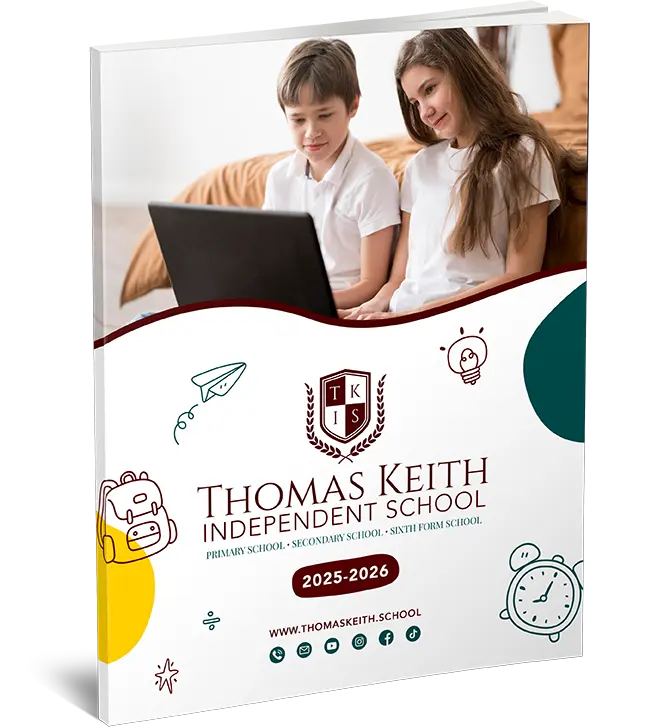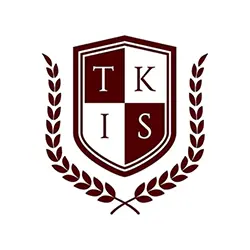A relative pronoun connects a clause to a noun or pronoun, adding more information about it. Common relative pronouns include who, whom, whose, which, and that. These words help create complex sentences by linking ideas.
Key Relative Pronouns and Their Uses
- Who: Refers to people (as the subject of the clause).
- Example: The teacher who helped me was very kind.
- Whom: Refers to people (as the object of the clause).
- Example: The student whom we saw won an award.
- Whose: Shows possession.
- Example: The girl whose book is missing is waiting outside.
- Which Refers to animals or things.
- Example: The car which broke down was repaired.
- That Refers to people, animals, or things in essential clauses.
- Example: The house that we visited is very old.
Examples in Action:
At Thomas Keith Online Independent School, KS2 students use relative pronouns in their writing to create detailed descriptions. For instance:
- “The teacher who teaches science always uses fun experiments.”
- “The library, which has thousands of books, is very popular.”
- “The student whose project won the competition felt proud.”
Practice Activity:
Write your sentences using relative pronouns. For example:
- Write about a friend who helps you.
- Describe a book that you enjoy reading.
- Explain a place that you visited recently.
Tips for Using Relative Pronouns Correctly
- Choose the Right Pronoun:
Always match the relative pronoun to the noun it refers to. For example:- Use who for people: The boy who is running is very fast.
- Use which for animals or things: The cake which she baked was delicious.
- Use that for essential information: The phone that I bought has a great camera.
- Avoid Unnecessary Repetition:
Do not repeat the subject unnecessarily when using a relative pronoun.- Incorrect: The book that is on the table is mine.
- Correct: The book that is on the table is mine.
- Use Commas for Non-Essential Information:
When the clause adds extra (non-essential) information, separate it with commas.- Example: The dog, which is very friendly, belongs to my neighbor.
- Practice Combining Sentences:
Use relative pronouns to combine two simple sentences into one.- Simple sentences: I have a brother. He loves football.
- Combined: I have a brother who loves football.
Real-Life Examples at Thomas Keith Online Independent School
Students at Thomas Keith Online Independent School use relative pronouns to improve their writing skills. For example:
- In their creative writing assignments, they write sentences like:
“The playground, which is very spacious, is filled with laughter every day.” - In science projects, they explain:
“The experiment that we conducted showed surprising results.” - During group discussions, they present ideas like:
“The classmate who shared the most points won the debate.”
Fun Activities to Try:
- Find and Correct:
Look for sentences with missing or incorrect relative pronouns and fix them.
Example:- Incorrect: The person who called you is outside.
- Correct: The person who called you is outside.
- Write Your Story:
Create a short story using at least five sentences with relative pronouns.
Example start: “There was a boy who loved solving puzzles. He had a very challenging puzzle.”

Why Learn Relative Pronouns?
Relative pronouns make writing more engaging and help connect ideas smoothly. Mastering them improves both written and spoken communication, preparing students for academic success. With practice, students can confidently use relative pronouns in any context, including creative writing, storytelling, and academic essays.
FAQs
- What are relative pronouns?Relative pronouns link clauses to nouns or pronouns, adding more information. Common examples are who, whom, whose, which, and that.
- How do I use “who” and “whom”?
- Who: Refers to the subject (person doing the action).
Example: The girl who sings is my friend. - Whom: Refers to the object (person receiving the action).
Example: The boy whom I called didn’t answer.
- Who: Refers to the subject (person doing the action).
- What is the difference between “which” and “that”?
- Which: Adds non-essential information, often separated by commas.
Example: My blue book is on the desk. - That: Adds essential information, no commas needed.
Example: The book that I borrowed is interesting.
- Which: Adds non-essential information, often separated by commas.
- Can I use relative pronouns for animals or objects?Yes, use which or that for animals and objects.
Example: The dog that barked loudly ran away. - When do I use commas with relative pronouns?Use commas when the clause gives extra (non-essential) information.
Example: The house, which has a red roof, is beautiful.
Conclusion
Relative pronouns are essential for linking ideas and adding details to sentences, by using pronouns like who, whom, whose, which, and that, you can make your writing clearer and more interesting.
At Thomas Keith Online Independent School, students learn to use relative pronouns effectively in creative writing, essays, and everyday communication. Understanding how to use these words helps students build strong language skills.
Practice often, and remember to check for correct usage in your sentences. With time, relative pronouns will become a natural part of your writing!




